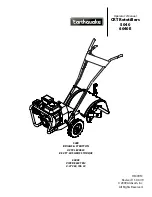
www.ZINEXTS.com
Page 31
Ver: 2.1
in sample causing
clumps or aggregates
in the Reagent Kit manual (Handbook).
2.
Suggest using blood kit 1200 instead of blood kit
200 (if testing sample is blood)
DNA Quality Problems
Problem
Cause
Solution
Low DNA yield
Incomplete lysis
Decrease the amount of starting material used.
Be sure to add Proteinase K during lysis, if included in the
protocol.
Make sure that the sample is completely immersed in the Lysis
Buffer.
Poor quality of starting
material
Be sure to process sample immediately after collection or store
the sample at appropriate temperature. The yield and the
quality of DNA isolated depend on the starting material.
Insufficient amount of
magnetic beads added
During shipping, some magnetic bead solution may adhere to
the sealing foil of the cartridge. To collect any bead solution
from the foil, tap the cartridge to deposit the bead solution at
the bottom of the well.
Clogged Tips resulting in
DNA loss
Ensure that the lysate does not contain any particulate material
that can clog the tip sprout. If needed, centrifuge the sample
prior to the MagPurix purification.
No DNA
recovered
Magnetic beads stored
or handled improperly
Store cartridge containing the beads at room temperature.
Do not freeze the cartridge as the beads may be irreparably
damaged.
Make sure that the beads are in solution at all times and do
not dry. Dried beads are non-functional.
Elute containing
DNA
is discolored
Magnetic beads present
in the elute
Remove any magnetic beads using a magnetic separator or
centrifuge the sample in a micro centrifuge for 1 minute at
maximum speed.
DNA contaminated with
heme
Minimize the amount of blood or blood-stained sample used
(≤ 20μl blood spot for
forensics sample).
DNA is sheared
or degraded
Bubbles formed during
mixing steps
To prevent bubble formation during mixing, make sure the
sample volume is at least the recommended volume listed
in the manual supplied with Reagent Kits.
Purified DNA repeatedly
frozen and thawed
Aliquot purified DNA and store at 4°C (short-term) or -20°C
(long-term). Avoid repeated freezing and thawing.
DNA contaminated with
DNases
Maintain a sterile environment while working (i.e. wear gloves
and use Dnase-free reagents).











































